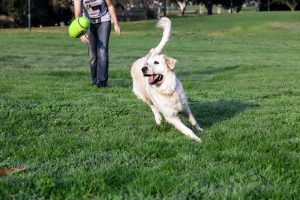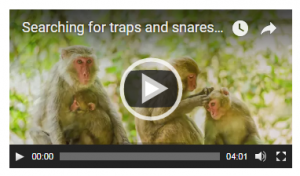[vc_row][vc_column][rev_slider_vc alias=”Scent”][vc_column_text]I think one of the most wonderful things in the world is watching a trained search dog or
tracking dog doing their job. It is a beautiful thing to see because the dog is doing it’s most
natural behaviour smelling what is around it. The olfactory system, smelling and scenting the
world around is a dog’s primary sense, Compare a dog’s sense of smell to our full colour
vision that we rely on so much and it is difficult to imagine if we used our sense of smell to
make the most important decisions. Apart from the visually impaired people we mainly use
our colour vision to make important choices in our environments.
There are many estimate about how much more powerful or sensitive a dog’s olfactory
system is compared to ours so I have included a technical explanation (i) at the bottom of
the page in italics if you want more details. It is without doubt that a dog’s sense of smell is
at least 100’s of times more powerful or sensitive than ours and that is why they can be
trained to recognise and find particular smells. To use a human / dog analogy to explain the
difference think about using your eyes to look at a field full of flowers they are all red flowers
apart from one blue orchid in the middle of the field, a dog would not see that blue flower
because at best their vision would be weak pastel shades Using that example a dog would
be able to go to a field full of long grass that had recently been fertilised and using it’s sense
of smell ignore the obvious smells from the fertiliser and find a single object, perhaps a
watch or a shotgun cartridge or some clothing. I hope that helps in understanding how a
trained dog can use it’s nose to find things.
The other incredible thing a trained dog can do with it’s nose is to follow tracks. Not so
incredible when you consider that the dog’s ancestors would have required this skill to track,
hunt and follow animals to survive. We can train dogs to use this natural behaviour and
motivate the dog to follow scents and tracks that we want the dog to follow.
Searching is another use of the dogs olfactory system and we can train a dog to use it to find
particular things in huge environments like a explosives detection dog searching for
explosives in a sports stadium or a mountain rescue dog searching for lost or injured hikers
in very inhospitable dangerous environments.
ITDOGS will be training dogs to use multiple searching and tracking techniques to find traps
and snares to prevent injury to other animals and try to change the attitudes of hunters who
lay these barbaric traps.
———————-
(i)
In vertebrates, smells are sensed by olfactory sensory neurons in the olfactory epithelium.
The olfactory epithelium is made up of at least six morphologically and biochemically
different cell types. The proportion of olfactory epithelium compared to respiratory epithelium
gives an indication of the animal’s olfactory sensitivity. Humans have about 10 cm2 (1.6 sq
in) of olfactory epithelium, whereas some dogs have 170 cm2 (26 sq in). A dog’s olfactory
epithelium is also considerably more densely innervated, with a hundred times more
receptors per square centimeter.[/vc_column_text][/vc_column][/vc_row]




